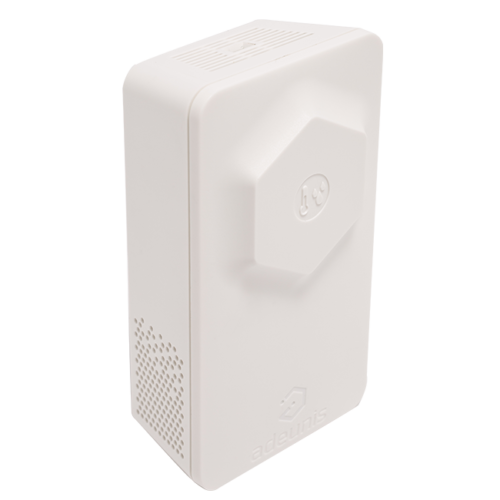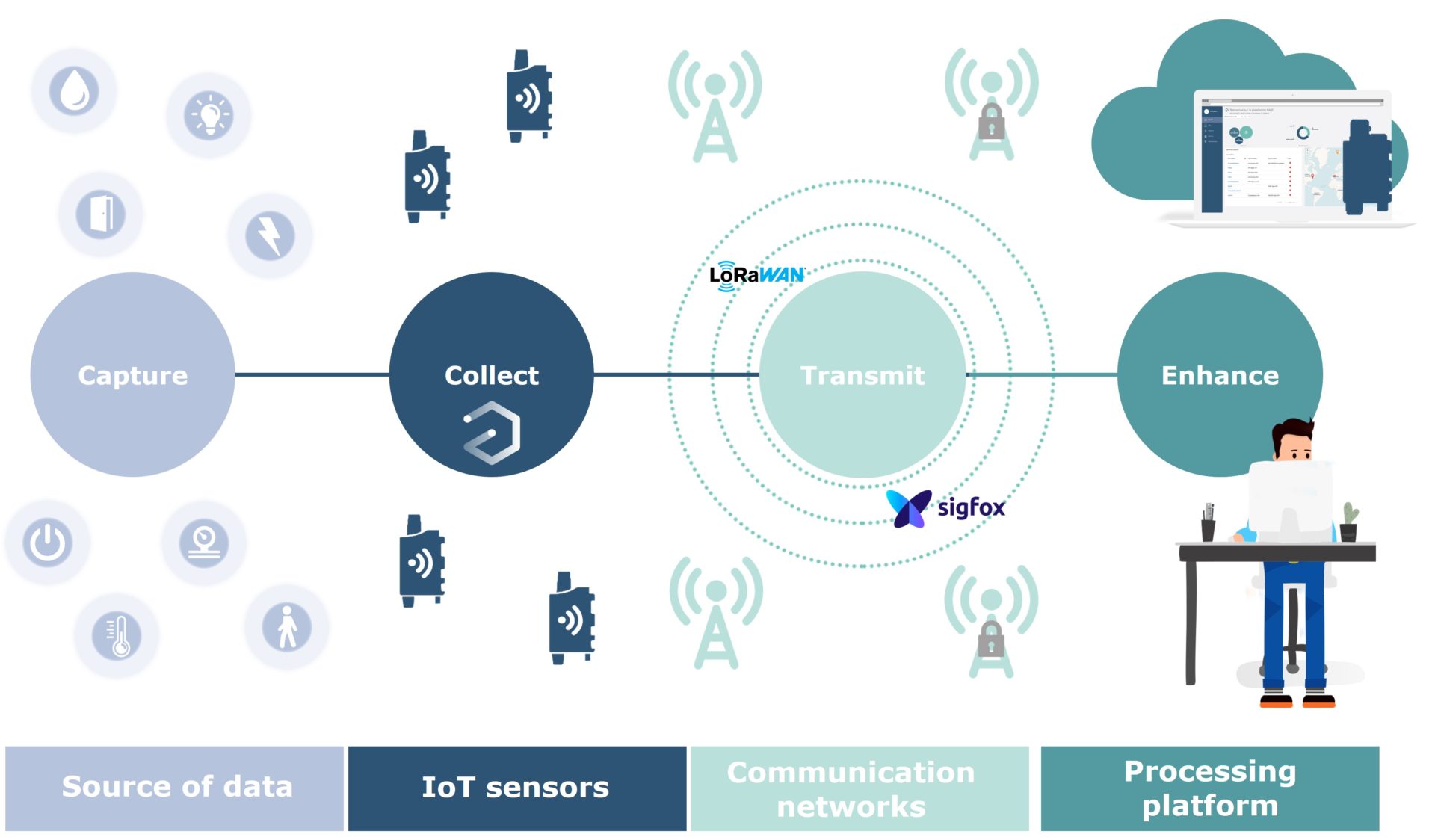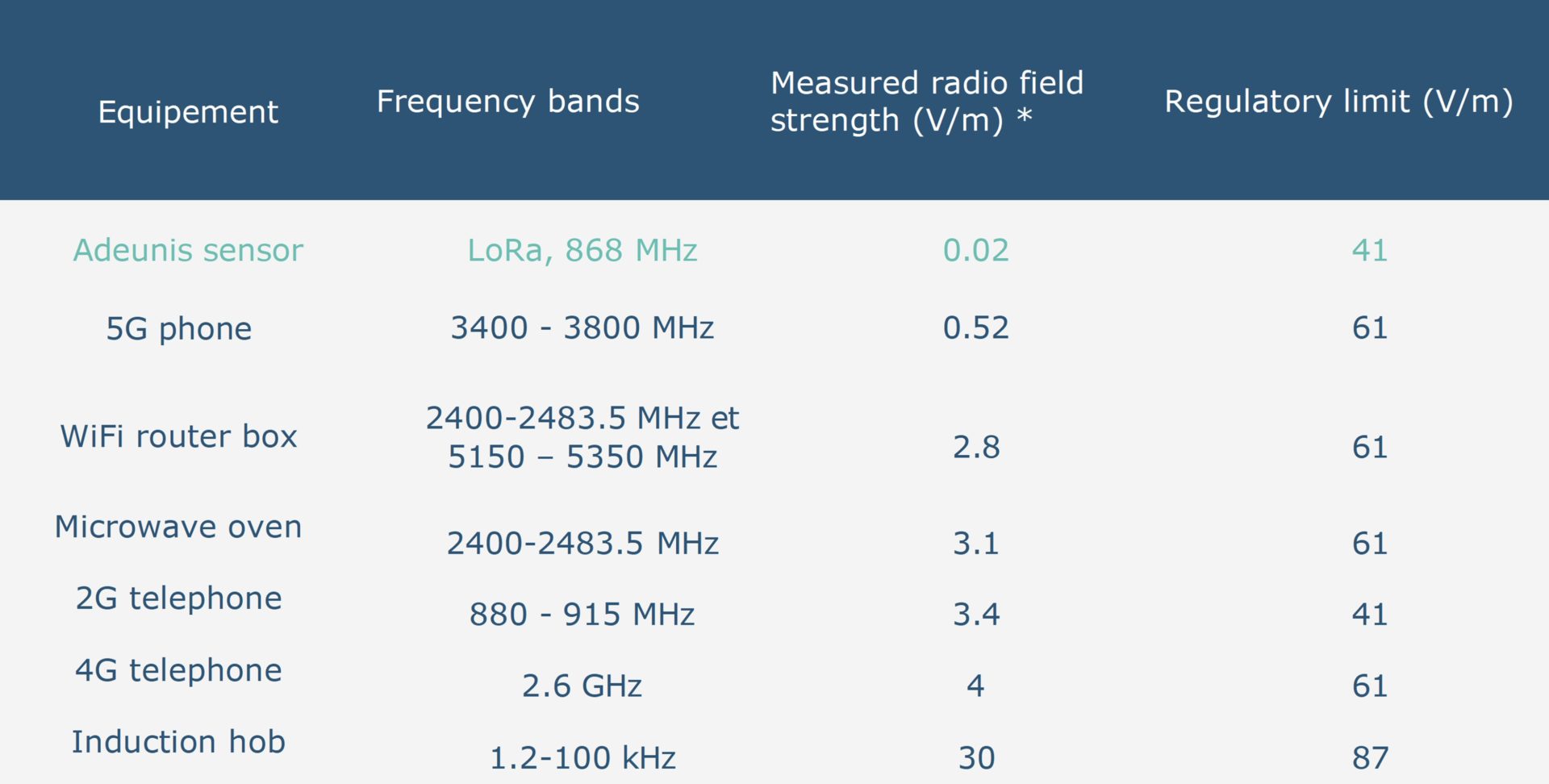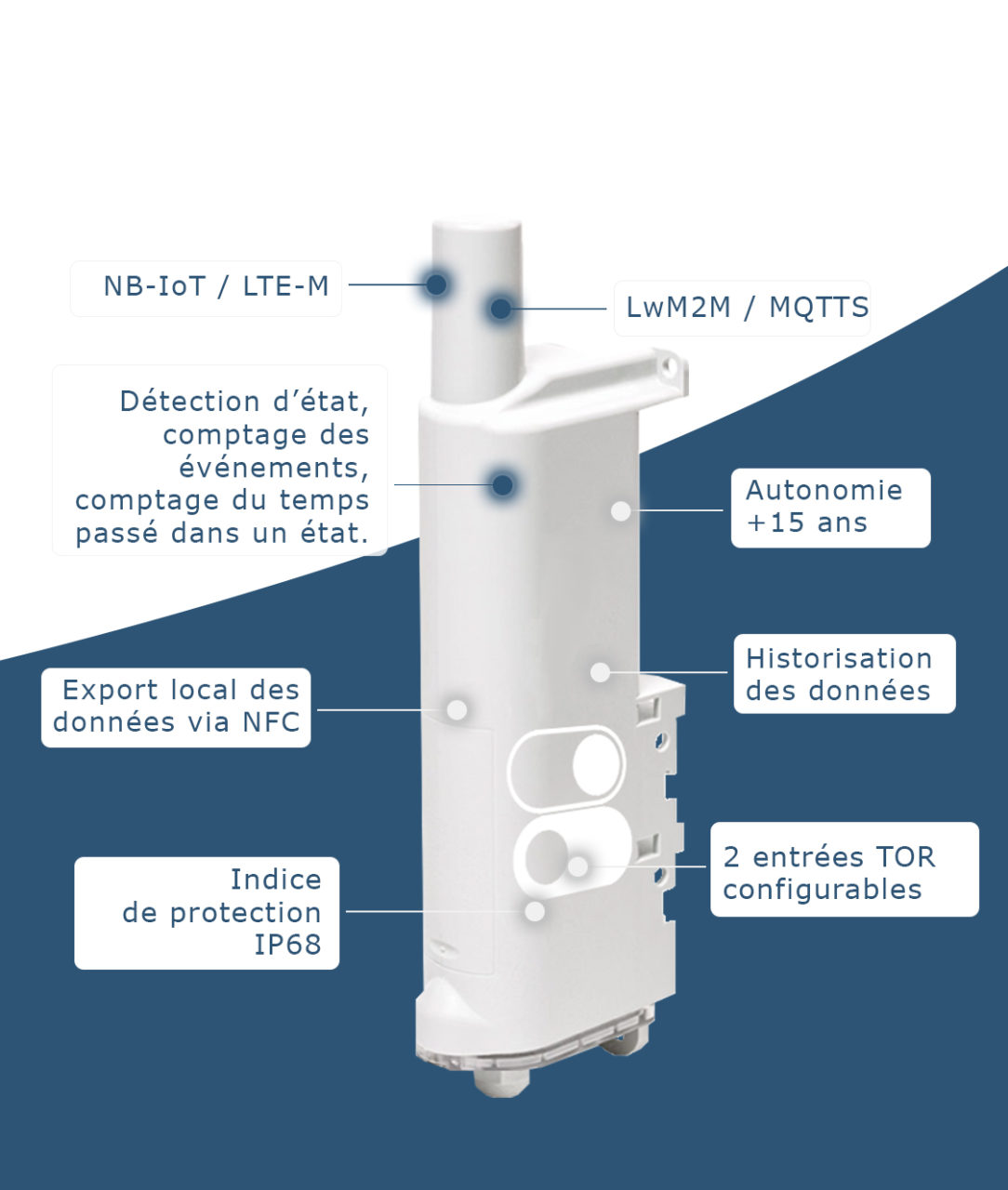IoT sensors are by definition wireless sensors. In order to communicate the data they collect, they emit waves via a defined communication network. What is the power of the emitted waves? Are there any health risks? Our answers in this article…
How do IoT sensors work in LPWAN?
Adeunis sensors use LPWAN communication networks: LoRa (via the LoRaWAN protocol) and Sigfox, to enable information from the sensors to be sent to Internet infrastructures (servers, smartphones, cloud, etc.) that use the data or even control the sensors.
The LPWAN radio communication protocols, LoRaWAN and Sigfox, allow connected objects to exchange small data at low speed (0.3 to 50 Kbps). This reduces the energy consumption of Adeunis sensors, giving them up to 10 years of autonomy.
In Europe, the LoRaWAN and Sigfox network protocols use the ISM 868 MHz radio frequency band. Communication is bi-directional. Adeunis sensors periodically connect to the network to send information to a relay antenna and then listen to the network over 2 short reception windows in case the server wants to send downlink information.


In a standard LoRa configuration, Adeunis sensors transmit for a duration of approximately 3 seconds, about every 10 minutes.
This means that over a 24 hour period, the sensors will transmit for a total of 7 minutes.
Compared to mobile phones or WiFi, in addition to transmitting at a lower power, the exposure time is negligible.
What are the health risks?
In general, electromagnetic waves can affect health depending on their frequency, intensity, duration of exposure and proximity to the body.
LPWAN protocols are not of concern, as the objects only wake up for a few minutes to send their data, are not worn on the body, and emit little data.
Adeunis sensors emit electromagnetic waves during communications but are not dangerous because:
- they are energy-limited and therefore do not emit too much,
- they are positioned more than 20 cm away from the body and exposure decreases with distance,
- they comply with all European and French standards: CE marking and the RED Directive, which cover EMF and human exposure aspects,
- they are certified by an independent accredited laboratory.

| Equipement | Frequence | Maximum transmission power (mW) |
|---|---|---|
| Adeunis sensor | 868 MHz | < 25 |
| 4G phone | 2,6 GHz | 2000 |
Compare the electromagnetic wave emission rate of an Adeunis sensor to different everyday objects
Which of the mobile phone, induction plate or Adeunis sensor emits the most waves? To answer this question, the French National Frequencies Agency (ANFR) has put its “Maison ANFR” online, a website that allows you to find out the level of exposure to waves of more than 70 connected objects in everyday life.

* Measurements carried out at 50 cm from the object, during 6 minutes, according to a protocol set up by the ANFR.
Source: La maison ANFR.
09/03/2023
20 years
expertise to support you, from the diagnosis to the implementation of your solution


